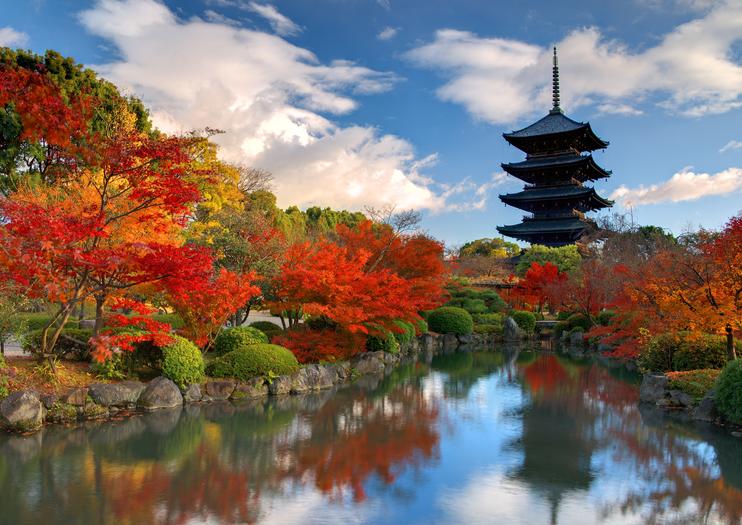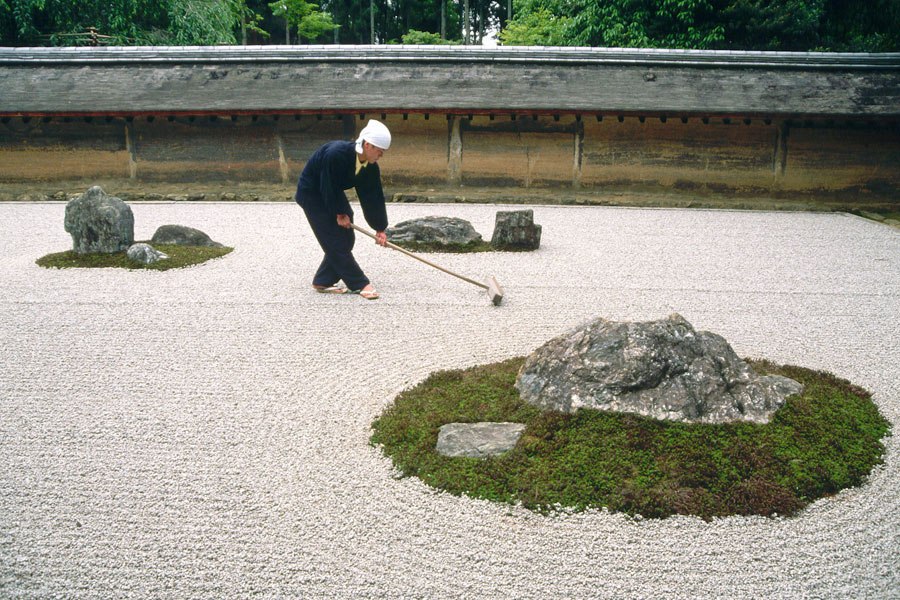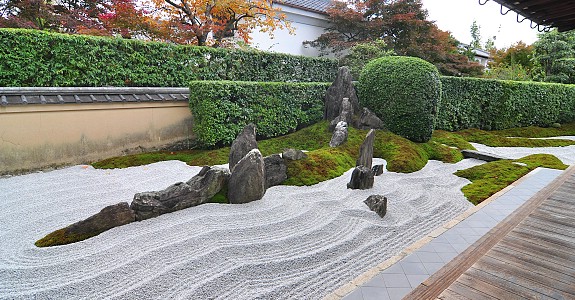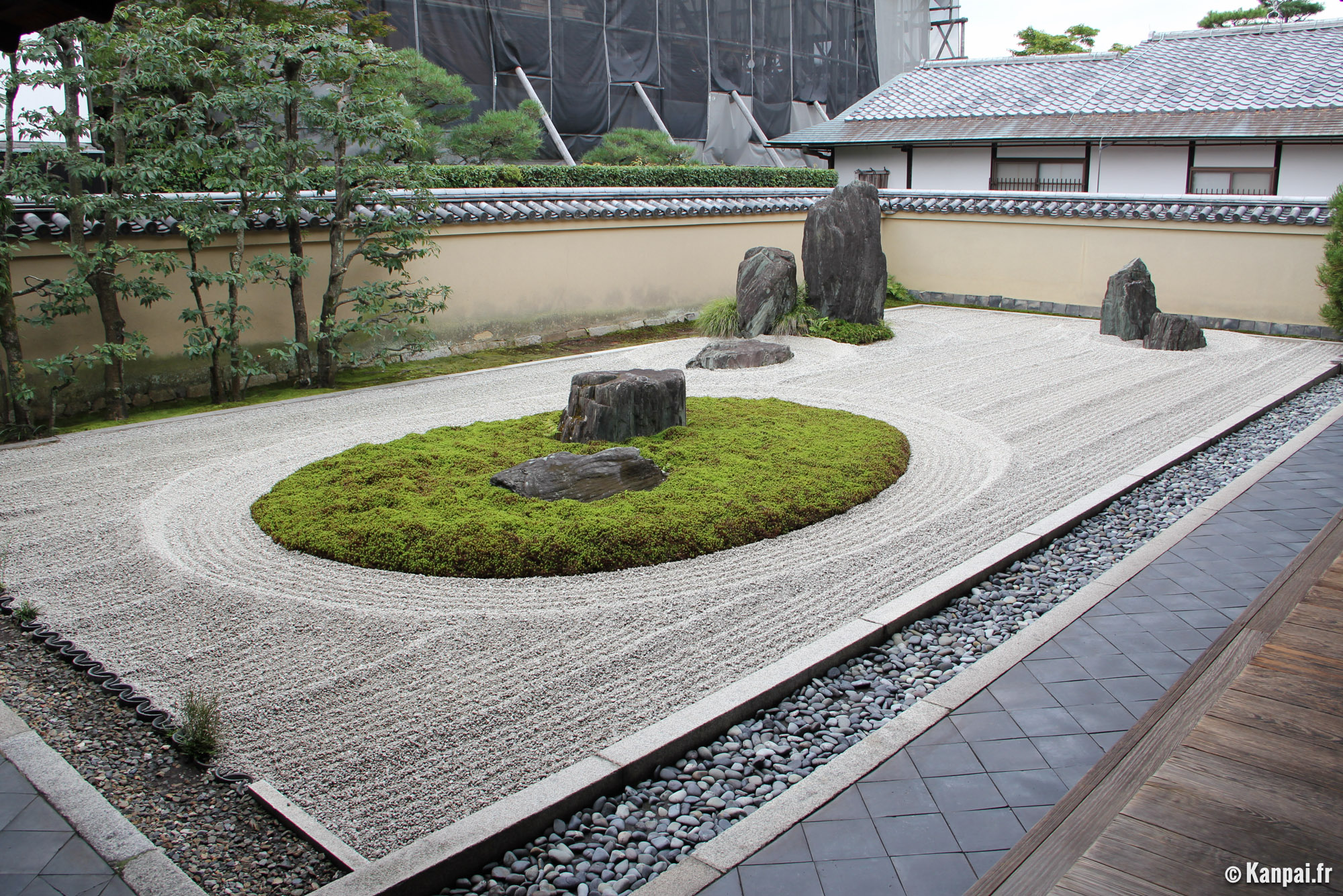KYOTO (pop 1.5 million) is the main tourist city of Japan. The Kyoto basin was first settled in the 7th century, and by 794, it had become the capital of Japan and home of the Imperial family until 1868, when it was moved to Tokyo. The capital was in Kamakura from 1185-1333 and Edo (Tokyo) from 1600-1867.
It has 17 Unesco World Heritage Sites, more than 1600 Buddhist temples and over 400 Shinto shrines. One of the world’s most culturally rich cities, along with traditional architecture, there is geisha, kabuki, and an incredible range of shopping and restaurants. It receives 50 million domestic and international tourists per year and is packed in cherry blossom and autumn foliage seasons. Accommodation is hard to come by during these times.
Although some of the major sites are in the city centre, most are on the outskirts along the base of the western and eastern mountains, and just outside of the city.
Day 1. KYOTO STATION AREA
I arrived in the futuristic Kyoto Station – a striking steel and glass structure with a 15 story observation level and a large department store. An escalator takes you to the 11th floor aerial skywalk high over the main concourse. Just north is the Kyoto Tower, a rocket look-alike perched atop the Kyoto Tower Hotel. I didn’t go up as it was overcast and views would not be far. Just north of that is Higashi Hongan-ji, a temple with a main hall that is one of the world’s largest wood buildings, 38m high, 76m long and 58m wide. I walked with my pack for an hour to get to my hostel. Later I visited two more sites close to Kyoto Station. Nishi Hongan-ji (Unesco, 1568-1600). Jodo Shin-shu (Pure Land) school of Buddhism headquarters with 10,000 temples and 12 million followers worldwide. Two huge temples. To-ji* (Unesco, 794/17th century)

Shingon school of Buddhism (Esoteric Buddhism). Great Buddha images in poses I have never seen before. A 57m high, five-story pagoda is the highest in Japan.
Day 2. HIGASHIYAMA DISTRICT
This is at the base of the eastern mountains, the main sightseeing area. It was cold and rainy and I mistakenly wore my flip-flops and basically froze on a huge walking day.
All the temples do a booming business in selling gaudy, cloth good luck charms, most saying the usual – good luck in: health, children, pregnancy, longevity, good relationships, prevention of misfortune, easy birth, happiness, academic achievement, but the ones that made me laugh were: prevention of headaches, healthy legs, no bad luck, and the best Good Luck for a variety of wishes. Original temples are rare, almost all were destroyed by fire at some point, but most in Kyoto were reconstructed in the 1600s.
Shinto practice is to purify yourself at a small water trough with dippers to ladle water onto each hand. There are many small shrines with a rope to ring dull bells, bow twice, clap your hands twice, make a prayer and bow again.
After each location I will put if a Unesco World Heritage Site, date that first built and date of last reconstruction. I marked the ones I particularly liked with a *.
SOUTH HIGASHIYAMA
Kiyomizu-dera* (Unesco, 798/1633), of the Hosso school of Buddhism, has a lovely location at the foot of the mountain above a waterfall. Ishibel-koji*, Kyoto’s most beautiful street. Kodai-ji (1605), a garden. Maruyama-koen, a huge cherry tree. Chion-in* (1234/17th century), Jodo or Pure Land sect of Buddhism, the most popular sect in Japan, and this temple is the most popular pilgrimage site in Kyoto, has the biggest temple gate in Japan and the biggest bell in Japan at 70 tons. Shoren-in* (16th century/1895), Tendai school of Buddhism, giant camphor trees, temple and gardens.
NORTH HIGASHIYAMA
Konchi-in* – a dry garden with a good rendering of borrowed scenery, lovely with all the moss, rocks and trees. Nanzen-ji* (1291/17th century), Rinzai school of Zen Buddhism, massive gate with steps to the second story, temple, tea room, gardens. Path of Philosophy* – 2km walk along a canal lined with cherry trees. Honen-in (1680), temples closed but nice gardens. Ginkaku-ji* (1482), spectacular gardens, with raked stones and geometric sand structures, always packed with people.
This ended my long walking day and it took me over an hour to walk home from Ginkaku-ji.
Day 3 NORTHWEST KYOTO
Today was another great walking day where I visited the two main temple areas in the west edge of Kyoto against the mountains. Kinkaku-ji* (Unesco, 1397/1955) – This is one of Japan’s best known shrines and is very busy. This is the famed ‘Golden Pavilion’, burned to the ground by a monk in 1950, rebuilt and then the upper two stories were covered in gold leaf in 1987. The pond fronting the temple and gardens are stunning.

Ryoan-ji* (Unesco, 1450), Rinzai school of Zen Buddhism. The main attraction is a garden with an austere collection of 15 rocks arranged in 5 groups surrounded by a small border of moss and an ocean of raked white gravel. No one knows the meaning of the composition. There is also a large pond and gardens.

Ninna-ji* (Unesco, 842/17th century), Shingon school of Buddhism. Several temples, a five-story pagoda, grounds with cherry trees.
It was an easy walk between these and I continued down through the Myoshin-ji group of temples to the JR station where I caught the train west to the Arashiyama Area.
ARASHIYAMA DISTRICT
Tenryu-ji* (Unesco, 1339/buildings 1900), Rinzal school Buddhism. Main attraction is the original Zen garden centred around a lake with a hill behind. Arashiyama Bamboo Grove*. Just outside the north gate of Tenryu-ji is a magical grove that seems to continue in all directions.

Okochi Sanso is a modern gardens built by an actor in Samarai films. North of here continue several temples and gardens.
CENTRAL KYOTO
This area is best seen with a one day Kyoto bus pass. 500 yen lets you ride all day – as each ride cost 220 yen, it is a great deal. Shimogama- jinga (Unesco, 8th century). Shinto temples in a broadleaf forest (a rarity in Kyoto). Kamigamo-jinja (Unesco, 678), Japan’s oldest shrine predating Kyoto founding. Two white conical mounds in front of the shrine represent mountains for gods to descend. A wedding was happening and I watched most of the ceremony.
Daitoku-ji* (Unesco). A collection of 24 temples, five of which are open. They are known for their gardens but visiting all five would cost 2200 yen.


Nijo Castle* (Unesco, 1603). This was the official Kyoto residence of the shogun. It is a huge place with walls and a moat with a subcastle surrounded by it own moat. The floors are ‘nightingale’ that squeak with the slightest step as a safeguard against intruders. The grounds with many cherry trees were nice. I did not go to the Imperial Palace or gardens as a reservation was necessary and they did not sound special.

One could spend months in Kyoto seeing all the shrines and gardens but in my four days I saw 11 of the 17 Unesco World Heritage Sites. The 6 Unesco sites I missed did not sound interesting and few of the temples outside of what I saw sounded very worthwhile. Most of the areas are very walkable but distances can be large. Kyoto bus passes are good deals. The bus map looks daunting as many stops have ten or more buses but in fact is amazingly easy to navigate. I did not ride the metro or trains other than the one JR train out to Arishiyama.
I then took the 45 minute train ride south to Nara.
NARA (pop 370,000) was the first permanent capital of Japan. Shinto taboos concerning death stipulated that the capital be moved with the passing of each emperor but this practice died out when Buddhism was introduced and the country came under imperial control in the 7th century. It was the capital for only 75 years from 710-785 when a priest seduced the empress and it was moved to Kyoto out of the reach of the powerful clergy. Nara was spared the periodic bouts of destruction wrecked upon Kyoto and many magnificent sites survived with eight of them Unesco World Heritage Sites. All the sites can be seen in an easy day.
Most of Nara’s important sites are in a huge park that occupies the east half of the city. The park is home to thousands of deer, all habituated and basically tame. The crowds feed them regularly and then wonder why the deer get aggressive. All the deer have had their antlers removed. In pre-Buddhist times, the deer were considered messengers of the gods and today enjoy the status of National Treasures. Yoshiki-en is a free gardens just outside the gates. Next door is another garden, Isui-en, dating from the late 1800s. It is the best garden in the city and has a lovely pond and water features. The great south gate has two fierce-looking guardians carved in the 13th century. They may be the two finest wood carvings in Japan, if not the world.
Todai-ji is the complex containing Nara’s famous Great Buddha and the cities star attraction. At 14.6m high, it contains 437 tons of bronze and 130kg of gold, and is one of the world’s largest bronze Buddhas. It was cast in 746 in eight castings over a period of three years. Its hands send the message ‘fear not’ and ‘welcome’. It was originally covered in gold leaf and must have had an enormous impact on its Japanese visitors in the eighth century. It is believed that it was made as a charm against smallpox, which ravaged Japan in the preceding years. Over the centuries, the statue took quite a beating, losing its head a few times in earthquakes.
The statue is housed in an equally huge building, the Daibutsu-den Hall, the world’s largest wood building at 48.74m high, 57m long, and has 112,589 roof tiles. Unbelievably, the present structure, rebuilt twice (last in 1709), is a mere two-thirds of the size of the original. Todai-ji was built by order of the Emperor during the Nara Period (710-785) and the complex was finally completed in 798 after the capital had been moved from Nara to Kyoto. Legend has it that two million labourers worked on the temple and its construction brought the country to the brink of bankruptcy. Also in the hall are four other great figures.
East of Todai-ji are two sub-temples on a hill with grand views of Nara. It is then a pleasant walk through woods and by knick-knack stands and other temples back to the city.
HORYU-JI. I then took the train SW to Horyu-ji, an amazing Unesco Site. Founded in 607 by Prince Shotoku, the patron saint of Japanese Buddhism, Horyu-ji is renowned as not only being the oldest temple in Japan, but also several of its great wooden temple buildings have survived earthquakes and fires to become the oldest wood buildings in the world. Many of the statues in the temples date from the 7th century. A treasure hall contains a great display of equally old stuff that is much more interesting than the average museum.
Rather than staying in Nara one more night (I had done everything I had wanted to do), I decided to go for a train ride around the Kii Peninsula. On four different trains, I made my way along the coast from Nara to Osaka (a city that holds little interest to the traveler) then south via Wakayama, Kushimoto on the south tip, and then north to Shingu and Matsysaka. They were many great views of the rocky coastline especially further south.
ISE. I then took a local train down to Ise to see Japan’s most sacred Shinto shrine, Ise-jingu (Unesco World Heritage). Dating back to the 3rd century, Shinto tradition has dictated for centuries that their shrine buildings be replaced every 20 years, with exact limitations according to ancient techniques using no nails, only wooden dowels and interlocking joints. The wood from the old shrine is then used to reconstruct the toril at the shrine’s entrance or is sent to shrines around Japan for the rebuilding their structures. In 1993, Ise-jingu was rebuilt at a cost of 5 billion yen ($50 million), and then rebuilt again last year in 2013.
Seems like an extravagance. The 1993 shrine is next door to the new one – the thatched roof was in bad shape.

It was not possible to enter either shrine and they are visible behind high fences. All the wood used to build the shrines is expensive clear lumber. The subshrines were just as nice and could be seen close up. The emperor was visiting the day I was there and one of the two sites, Naiku, was closed but the other site, Geku, was open. The forest surrounding the shrines was magnificent with huge trees.
More observations about Japan: On the early morning train to Osaka, it was crowded but intensely quiet. Nobody spoke, no background music, and the only sound was the chorus of sniffles as many had colds and don’t often blow their nose under the ubiquitous face masks. I always found wearing a face mask in the OR uncomfortable and hot but these people seem to live in theirs. Almost all Japanese men wear black suits and ties and seem very serious on their way to work. unlike third world countries, many people are reading like many westerners. Screen use is common here but nowhere like it was in Korea where everyone was on a screen with ear buds.
Although most signs and menus are in Japanese, many businesses have English names and slogans. All announcements in train stations and trains are repeated in English or displayed on electronic signs which is very convenient. Buses (especially in Kyoto where I used them a lot) are a model of efficiency. Routes and stops on the buses and bus stops were displayed in English and it makes travel a breeze. Most models for hair styles and clothes are caucasian.
Most restaurants display all the available menu in the windows as “plastic food models”, amazingly accurate renditions. I’m not sure how it is done but must be expensive to create.
The cost of fruit is unbelievably expensive. Some examples from one supermarket in Kyoto were (these were all perfect specimens, usually on the large side and prices are for one $1 equal to 100 yen): pear 140, apple 270-330, grapefruit 290, orange 100-120, lemon 65, lime 140, kiwi 150, 1/2 cup blueberries 550, 15 small raspberries 430, 11 medium strawberries 930, and the grandaddy of them all one large cantaloupe 4300. I don’t think they eat much fruit. Vegetables seemed cheaper.
